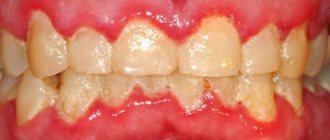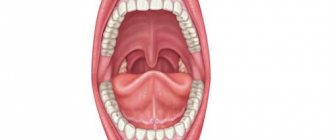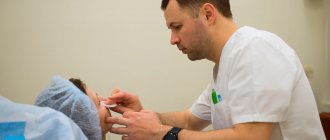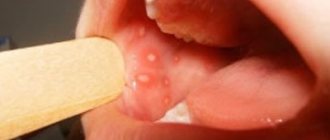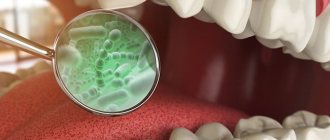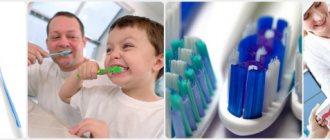In many ancient states where medicine was developed, people believed in hidden connections between various organs. Some doctors have tried to find answers about a person's health by examining their tongue. Science has evolved, and many views on diagnosing diseases by language have changed, but even modern doctors are finding evidence of this connection.
Modern doctors believe that certain properties of the tongue do not indicate an accurate diagnosis, but they help to find out the direction of diagnosis . So from time to time it is advisable to look at this organ and consult a doctor if its color or shape changes.
The reason for the appearance of plaque on the tongue
A large amount of plaque on the tongue, a change in its color, as well as the appearance of such unpleasant symptoms as bad breath, unpleasant taste and dry mouth become causes for concern.
Why does plaque form on the tongue in children?
Most often, parents notice a coating on the child’s tongue in the morning - immediately after sleep. At night, the child's body produces a limited amount of saliva, the cheeks and tongue are not cleaned, and bacteria multiply rapidly in humid conditions. With the partial destruction of leukocytes, which appear to suppress bacteria, the tongue becomes covered with a whitish film.
Plaque on the tongue of an infant or a child 1.5 years old and older should not cause concern if:
- lies in a thin layer;
- does not lead to a change in the overall color of the tongue;
- can be easily cleaned with a brush without leaving any scarlet spots underneath;
- not accompanied by alarming symptoms (high fever, nausea, vomiting, etc.)
In infants, plaque forms in response to regurgitation or consumption of dairy products. If the baby has no signs of inflammation in the mouth, this condition is considered normal.
However, plaque on the tongue in children of different ages often forms as a result of the development or after suffering from certain diseases. Most often the cause is a common cold. Children with rhinitis or adenoiditis have impaired nasal passage; they try to breathe through their mouth. The mucous membrane dries out and plaque forms on it.
Causes of plaque on the tongue in adults
If we are talking about plaque, as a result of the vital activity of microorganisms that make up the natural microflora of the oral cavity, an adult observes the following signs:
- the layers have a white-pink tint;
- plaque is visualized in the morning, mainly at the back wall of the receptor organ (at the base, root of the tongue);
- the film is easily removed and does not form again.
Most often, the cause of the appearance of deposits is the banal consumption of coloring foods (coffee, tea, chocolate, carrots, beets, etc.). The second most common cause of the phenomenon is smoking. Often this symptom accompanies certain therapeutic courses, for example, taking antibiotics.
A change in the color of plaque, its active formation, which is accompanied by other unpleasant signs, indicate the pathological nature of the phenomenon. More often, the cause is gastrointestinal pathologies, for example, gastritis, which occurs against the background of stomach pain and heartburn.
Let's talk in more detail about what diseases can provoke excessive plaque formation on the tongue in adults and children.
What parents should pay attention to and be wary of
- Breathing through the mouth if the child does not have a runny nose.
- No gaps between teeth by 4-5 years.
Baby teeth are small and there is usually always room for them, even if the jaw has not developed enough. As the child grows up and prepares for a mixed dentition, so-called trema should appear between the baby teeth - small but distinct distances. When baby teeth fall out, permanent teeth will erupt, which are much wider than baby teeth, and they should have enough space for normal growth and the formation of an even, beautiful dentition.
- Observe the child’s swallowing of saliva; normally, swallowing occurs imperceptibly, without tension in the facial muscles.
Usually, during an appointment, a pediatric dentist draws the attention of parents to the emerging problems of forming a correct bite and refers such children to an orthodontist.
If this does not happen, it is necessary to show the child at the age of 4-5 years to a pediatric orthodontist, preferably one who takes into account the functional approach in his work.
What diseases can plaque indicate?
Among the pathologies that provoke the formation of whitish deposits on the tongue: infections, gastrointestinal diseases, immune pathologies and others. Below are the most likely ones:
- colds, acute respiratory viral infections, acute respiratory infections, flu, sore throat. The formation of plaque on the tongue indicates an uncontrolled proliferation of pathogenic microorganisms;
- glossitis or “geographic tongue”. Inflammation of the tongue caused by injury and of an infectious nature. Red spots form on the tongue, which often go away on their own.
- gastritis, gastric ulcer, enterocolitis. Inflammation of the gastric mucosa, in which a grayish-white coating appears on the tongue;
- candidiasis or thrush. The plaque caused by a fungal infection is localized under the tongue, it is uneven and appears in spots;
- chlamydia. Failure of the immune system, which leads to the formation of a thick sticky coating not only on the tongue, but also on the palate;
- bronchitis and pneumonia. Diseases of the upper respiratory tract stimulate the formation of a whitish film along the edges of the receptor organ;
- first stages of cancer. Whitish lesions lack clear boundaries. They are formed in all forms of cancer;
- lichen planus. Small grayish-white nodules appear in the patient’s mouth, which form a layer similar to lace;
- jaundice and liver disease. The color of the plaque is predominantly yellow; when bile stagnates, it acquires a greenish tint;
- diabetes. The film appears in response to a deficiency of saliva in the mouth, the disease is accompanied by the development of candidiasis in the oral cavity;
- chronic constipation. The film is thick, dense, with a repulsive odor;
- acute and chronic radiation sickness. The tongue swells, becomes covered with a thick film, cracks, hemorrhage and necrosis appear in the root area of the organ.
As you can see, plaque on the tongue can be a symptom of both minor health problems and serious pathologies that require an immediate comprehensive approach.
FAQ
Will I be able to correct my malocclusion if my tongue position remains incorrect?
Modern orthodontics has a wide range of methods for correcting malocclusion. At the same time, bite correction must be comprehensive. A prerequisite is the elimination of all causes and factors leading to the formation of malocclusion. This also applies to correcting the position of the tongue.
Will myogymnastics help correct the situation?
Yes. Exercises will help correct the position of the tongue. But sometimes exercise is not enough. Additionally, orthodontic treatment to correct the bite is required. In some cases, surgery is needed.
Should the tongue rest on the teeth?
No, it should be located behind the teeth.
Plaque and dental problems
The topic of plaque and dental problems deserves special attention. Any dental disease occurs against the background of active activity of pathogenic microorganisms. Obviously, this factor contributes to the formation of pathological plaque in the mouth.
Plaque on the tongue, cheeks and palate can appear as a result of a banal failure to comply with the rules of oral hygiene, or the picture can be much more serious. In particular, such a dangerous disease as Vincent's stomatitis manifests itself by the formation of a whitish film.
The conclusion is obvious: if the amount of plaque increases or its structure changes, you must immediately contact your dentist to undergo a detailed diagnosis and, by starting timely treatment, prevent undesirable consequences.
Types of plaque
When assessing the nature of the phenomenon, it is worth taking into account not only the amount of deposits, but also their color and structure. Below we will tell you what the color of the plaque says:
- white. A thin white mucous coating after night is not a deviation. An increase in the density of the membrane indicates chronic constipation. A cheesy light coating is a symptom of Candida infection.
- red. Indicates the development of an infection, such as a sore throat. A dark red tint will indicate problems with the kidneys; the plaque acquires this color when the body is poisoned by various poisons;
- yellow. A bright color indicates the development of hepatitis A. If there are problems with the gallbladder, in addition to the yellow film, cracks appear on the tongue;
- green. Visualized during inflammation of the organ - glossitis. Most often, the provoking factor is a fungal infection (yeast glossitis);
- brown. This purulent tint is associated with liver intoxication (alcohol addiction). However, coffee, tea, and chocolate can also give brown color to deposits;
- grey. A characteristic symptom of pathologies of the stomach and duodenum, and also appears when the immune system is damaged. The same diseases also affect tooth enamel (it also takes on a dark shade);
- bluish. This is a symptom of an experienced smoker. The root of the tongue becomes blue and becomes slightly thicker;
- orange. A rare phenomenon that indicates the release of acid from the stomach into the oral cavity. However, this condition should not be confused with staining the surface of the organ with food coloring;
- black. A dangerous sign indicating a strong sludge in the body or a specific disease, for example, Crohn's disease. Black spots on the tongue are visualized due to metal intoxication.
A spotted coating on the tongue (when the surface of the organ is covered with uneven spots) appears in people of different age categories. Most often, this condition does not pose any danger and goes away on its own. Today, the reason for this phenomenon has not been fully identified. Each clinical case is individual - the cause of the spots can be either candidal stomatitis and allergies, or the individual characteristics of the patient’s body.
Diagnosis of diseases by human language: the relationship of language with human organs
To accurately diagnose the disease, the tongue is divided into separate zones:
- The tip of the tongue reflects the work of the heart, lungs and small intestine.
- The edges on the sides of the tongue characterize the liver and gall bladder.
- The central part of the tongue reflects the work of the stomach and spleen.
- The posterior portion of the tongue reflects the state of the genitourinary system.
- The left and right points from the root of the tongue are the left and right kidneys, respectively. The left side is connected to the spleen, and the right side is connected to the liver.
- A longitudinal fold along the tongue characterizes the spinal column.
- The V - shaped stripe between the tip and center of the tongue corresponds to the functioning of the respiratory and immune systems.
Diagnosis of diseases by language pictures
How to get rid of plaque and prevent it? TOP methods
Before you start getting rid of plaque, you should determine the exact cause of the phenomenon. White-yellow plaque can be eliminated using regular hygiene procedures:
- proper brushing of teeth and tongue. After brushing the surface of the teeth, you should make several longitudinal movements from the base of the tongue to the end to clean the receptor organ from the plaque that has formed. This should be done not only in the morning, but also in the evening to eliminate food residues;
- use of antibacterial rinses and sprays. It is worth using the mentioned products between meals: they allow you not only to freshen your breath, but also to eliminate some of the bacteria. Such rinses and sprays are especially relevant when it is not possible to perform full oral hygiene;
- use of an irrigator. The device allows you to maintain healthy microflora in the mouth due to its ability to remove food debris and deposits in hard-to-reach places, including periodontal pockets. An indispensable device when wearing braces, as well as for patients with crowns and implants;
- professional cleaning by specialists. Regular hygiene and prevention in the dental clinic will avoid the development of oral diseases and prevent unwanted accumulation of microorganisms in the oral cavity. Hygienic cleaning of the oral cavity in the dentist’s office will not only help get rid of plaque on the tongue, but will also save you from dental plaque, whitening your smile by 1-2 shades.
A separate group of methods for getting rid of whitish plaque includes traditional medicine. Among the most effective of them:
- rinsing with infusions and decoctions of medicinal plants. Herbs such as mint, sage, chamomile, and eucalyptus have performed well in this matter. These plants can be bought at the pharmacy (in dry form). Rinsing with herbal decoctions will get rid of the film and prevent gum disease;
- rinsing with vegetable oil. You should prepare 1-2 tbsp. l. vegetable oil and rinse your mouth with it for several minutes. The effect will be similar to the action of an absorbent, which absorbs all harmful components. After rinsing, the mouth should be rinsed with running water;
- resorption and chewing of propolis pieces. This natural disinfectant will reduce the number of bacteria in your mouth;
- rinsing with a weak solution of salt and soda. Such compositions help cleanse the oral cavity of food debris after eating. Rinsing takes 2-3 minutes.
If there is a suspicion that pathology is the cause of plaque formation, it is necessary to begin comprehensive treatment, which will be aimed at eliminating the provoking factor. The above methods of dealing with an unpleasant phenomenon are used as supportive ones.
Training to improve the situation
It is possible and necessary to correct the position of the tongue. Myofunctional therapy has been developed for this purpose. It is used for both therapeutic and preventive purposes. The advantages of this treatment are that it can be performed at any age and at any stage of orthodontic treatment. In addition, mewing does not require special skills or experience. Myofunctional orthodontics specialists will simply show you exercises that need to be performed regularly. The patient’s task is to perform the complex in strict accordance with the doctor’s recommendations.
Here are some common exercises that will help correct the position of your tongue:
- Place your lips behind your lower teeth, press your tongue to the roof of your mouth, and tighten your chin. Hold this position for 5 seconds, then relax your muscles. Repeat 10 times.
- Place your tongue behind your upper teeth, lengthen your chin and tense your lower jaw and hold for 10 seconds. Repeat 10 times.
- The tongue must be placed in the palatine cavity and tense. Stay in this position for 10 seconds, then relax. Repeat 10 times.
- The starting position is the same as in the previous exercise. Now try to swallow saliva without using the muscles of your cheeks and lips. Only the muscles of the tongue should work. This exercise will be difficult for you at first, but every time you do it you will notice progress. Repeat 10 times.
- The starting position is the same as the previous exercise. Tighten your tongue and smile. Then use your index fingers to press on the corners of your mouth, trying to hold back your smile. After 10 seconds you can relax. Repeat 10 times.
- Pull your tongue forward as far as possible, trying to reach your chin. Hold for 5 seconds. Repeat 15 times.
- Extend your tongue, trying to reach the tip of your nose. Hold for 5 seconds. Repeat 15 times.




